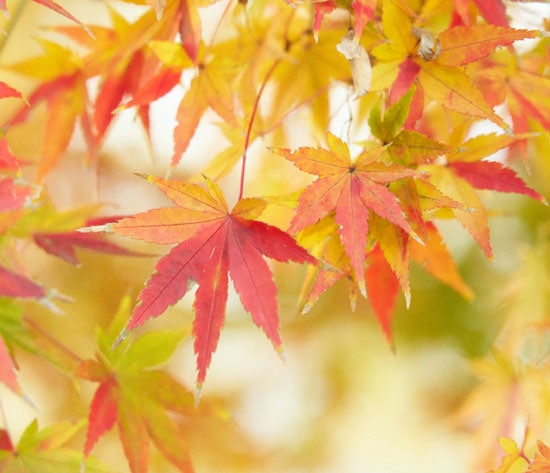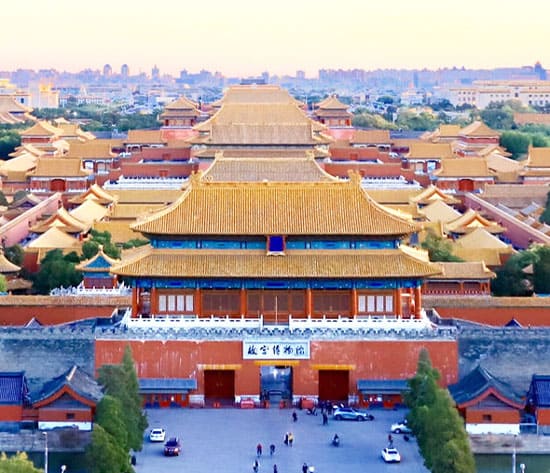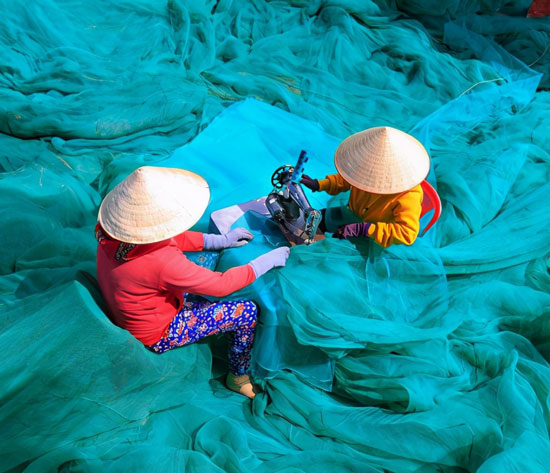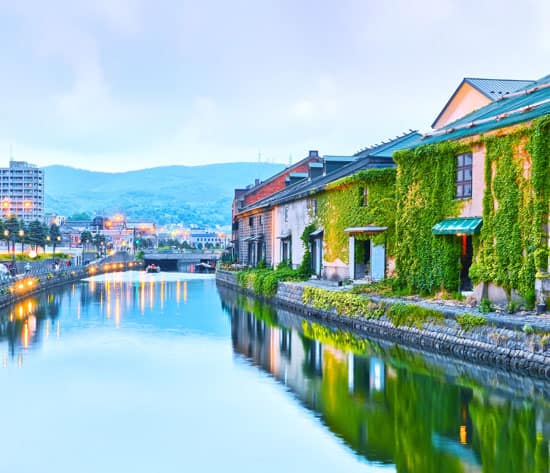As the tallest mountain in Japan, the height of Mount Fuji is 3,776 meters. It is also a symbol and inspiration of Japan.
If you're planning a trip to Japan, Mount Fuji is a must-visit place during your time in Japan. In this article, we'll tell you about the best place to see Mt Fuji, the best things to do around Mt Fuji, and where to stay to see Mt Fuji.
Table of Contents
Where is Mount Fuji
Why Visit Mount Fuji
Best Time to Visit Mt Fuji
Top Mt Fuji Viewing Spots
Must-Do Activities at Mt Fuji
How to Get to Mt Fuji from Tokyo
Where to Stay near Mt Fuji
How Long to Spend at Mount Fuji
1–3 Day Mount Fuji Tour Itineraries
Practical Tips for Mt Fuji Travel
FAQs about Mount Fuji Travel
Where is Mount Fuji
Mount Fuji is located on Honshu Island in Japan, spanning Shizuoka and Yamanashi prefectures. Mount Fuji is one of the main attractions in the Fuji-Hakone-Izu National Park.
Mount Fuji is located near Tokyo, approximately 100 km (62 miles) southwest of Tokyo. If you travel to Tokyo, Mount Fuji can easily become an ideal choice for your day trip from Tokyo.
Why Visit Mount Fuji
Mount Fuji is the most representative natural landscape in Japan and an active volcano listed as a UNESCO World Heritage Site. It is a cultural symbol of Japan and is sacred to Japanese people. Mount Fuji is renowned worldwide for its elegant conical shape.
Throughout the year, Mount Fuji offers different natural landscapes. In spring, pink cherry blossoms bloom at the foot of the mountain. In autumn, the forests around Mount Fuji are dyed in vibrant colors, such as red, orange, and yellow. In winter, the mountain top is covered with snow. And you can enjoy an excellent view of Mount Fuji reflected on the lake.
Mt Fuji is a popular hiking spot that attracts a large number of climbers. You can climb Mount Fuji from hiking trails of different difficulty levels and experience the changes from the foot of the mountain to the summit.
The Mount Fuji area is rich in outdoor activities, famous attractions, and hot spring resources.
Best Time to Visit Mt Fuji
The best time to visit Mount Fuji depends on what you want to do in the Mount Fuji area.
In winter (December to February), you can capture the clearest and most uninterrupted mountain views. The second is the sunny autumn. Winter is suitable for tourists who want to enjoy the winter scenery in a peaceful atmosphere.
The best time to climb Mt. Fuji is summer, from early July to early September. During this period, the snow on the mountain top is melting with mild weather, making it the best time for climbing.
For those who want to appreciate the scenery, Mount Fuji offers the most beautiful cherry blossom and maple leaf scenery in spring and autumn. Compared to the summer climbing season, there are fewer crowds in autumn.
The cherry blossom season in April and the climbing season from July to August are the peak seasons for Mount Fuji.
Top Mt Fuji Viewing Spots
Here, we have carefully selected 5 popular spots to enjoy the view of Mount Fuji. All Mt Fuji attractions will offer you a unique experience of Mount Fuji sightseeing.
1. Lake Kawaguchi (Fuji Five Lakes)
There are five lakes around the north of Mount Fuji Mountain: Lake Kawaguchi, Lake Yamanaka, Lake Saiko, Lake Shojiko, and Lake Motosu.
Among them, the most popular one is Lake Kawaguchi, which is also well-known as one of the best places to capture the beautiful scenery of Mount Fuji. The clear Lake Kawaguchi reflects Mount Fuji and is famous for the "upside-down Fuji" view. Tourists can take a boat tour on the lake. There are other attractions around the lake, such as Kawaguchiko Tenjoyama Park, Oishi Park, and Itchiku Kubota Art Museum.
Lake Yamanaka is the largest of the Fuji Five Lakes and offers a rich variety of interesting activities. You can enjoy cycling around the lake, camping, fishing, hiking, water skiing, etc., here.
Saiko Iyashi-no-Sato Nenba at Lake Saiko still retains the traditional Japanese village. Lake Saiko is also a popular area for hiking and camping. Near Lake Saiko, you can explore the Narusawa Ice Cave and the Fugaku Wind Cave.
Unlike the busy Lake Kawaguchi, Lake Shojiko and Lake Motosu are peaceful and relaxing places away from the crowds. And you can still enjoy beautiful views of Mount Fuji and experience various outdoor and water sports.
2. Chureito Pagoda
The frame of the five-story pagoda and Mount Fuji together is one of the most favored shooting compositions for photographers. The iconic Chureito Pagoda is located at Arakurayama Sengen Park. Tourists can enjoy the beautiful scenery of cherry blossoms blooming in spring and the charming red leaves in autumn in the park.
The observation deck behind the Chureito Pagoda is the best location to capture the cherry blossoms, Mount Fuji, and the five-story Chureito Pagoda all in one photo. To reach the observation deck, you need to climb 398 steps.
3. Oshino Hakkai
Located at the foot of Mount Fuji, Oshino Hakkai is known for its eight mirror-like springs and the scenery of Mount Fuji, making it a photography paradise. Eight clear springs are formed by the snow water from Mount Fuji. Next to them are traditional thatched houses and water wheels, full of an idyllic atmosphere.
There are stalls selling specialty snacks and local handicrafts in Oshino Hakkai. You can stroll around and get a taste of Japanese rural culture.
4. Hakone
Hakone is famous for its hot springs, volcanoes, and the distant view of Mount Fuji. Especially on sunny days, the majestic Mount Fuji is particularly eye-catching.
Lake Ashi is one of the awe-inspiring attractions in Hakone for viewing Mount Fuji. The sparkling Lake Ashi is surrounded by mountains, reflecting Mount Fuji. You can ride a boat to enjoy the breathtaking scenery or take a leisurely walk to explore Lake Ashi.
As the Hakone Ropeway slowly ascends, a 360-degree natural beauty unfolds before your eyes. Owakudani Station is an important station on the way. Owakudani is famous for its volcanic activities, where you can observe the unique landscape created by volcanic eruptions.
In addition, there are many hot spring hotels in Hakone with outdoor hot springs facing Mount Fuji. You can enjoy the magnificent Mount Fuji while soaking in the hot springs.
5. Tokyo Skytree
As a landmark of Tokyo, Tokyo Skytree stands at a height of 634 meters. It is an excellent point to overlook the Tokyo urban area and its surrounding regions. The two observation decks of Tokyo Skytree also provide a unique perspective of the Tokyo Skyline with Mount Fuji.
The early morning and sunset times of winter are the best opportunities to view Mount Fuji from the Tokyo Skytree, as the weather is usually clear at this time, and it is easier to see Mount Fuji. It is recommended to check the weather in advance and avoid days with low visibility.
Must-Do Activities at Mt Fuji
Mount Fuji and its surrounding areas offer a wide range of activities and experiences, whether it's climbing the mountain or capturing beautiful moments. If you plan to visit Mount Fuji, you can choose what to do in Fuji Mountain according to your interests.
1. Capture the Perfect Shot of Mt Fuji
You can take the most iconic photos of Mount Fuji scenery at the Chureito Pagoda at the Arakura Fuji Sengen Shrine.
Fuji Five Lakes are also excellent spots for capturing the reflection of Mount Fuji, especially on Lake Yamanaka and the north shore of Lake Kawaguchi. Approach the shore of the lake and shoot from bottom up. Then you can capture the serene lake combined with Mount Fuji.
These popular shooting places on Mount Fuji usually have a lot of people. We suggest that you arrive early in the morning to avoid crowds. And in the morning, from 6 to 9 am, the sunlight is soft, and the visibility is great.
2. Climbing Mt Fuji
Do you want some challenges? Take a hike on Mount Fuji and reach the summit at 3,776 meters. Climbing Mt Fuji for the sunrise is the ultimate dream of countless climbers!
There are four hiking trails on Mount Fuji, which are suitable for climbers of all levels. The Yoshida Trail is the most popular among them, with complete facilities and suitable for first-time climbers. It only takes you 5 to 7 hours to reach the top of the mountain. The Yoshida Trail is also the best route to welcome the sunrise at Mount Fuji. It is recommended to confirm the specific opening times in advance and comply with relevant rules.
3. Visit Mt Fuji 5th Station
There are four fifth stations on Mount Fuji, leading to four different hiking trails.
The famous Mt. Fuji 5th Station, also the Fuji Subaru Line 5th Station, is the starting point of the Yoshida Trail. You can reach Mt Fuji 5th Station by the Fuji Subaru Line.
Besides climbing Mount Fuji, you can also enjoy Mount Fuji here. You can enjoy a panoramic view of Fuji Five Lakes and the surrounding mountains. Mt Fuji 5th Station offers restaurants and shops. You can also hike around and visit historic Fuji Komitake Shrine.
4. Soaking in Fuji Onsen
Winter is the best season to experience Mount Fuji's hot springs. You can soak in warm spring water in cold weather while enjoying the snowy Mount Fuji. Or after climbing Mount Fuji, rejuvenate and relax your body in a natural hot spring.
You can visit public bath houses or stay overnight at a ryokan or hotel with hot springs. Hot springs near Lake Kawaguchi and Lake Yamanaka are recommended.
5. Fuji-Q Highland Thrills
Fuji-Q Highland is renowned for its thrilling rides and stunning views of Mount Fuji. The super-long roller coasters and excellent height difference allow you to fully experience the thrill of speed and the adrenaline rush. Haunted houses are also terrifying.
The various attractions and rides in the amusement park are also suitable for families with kids, such as Thomas Land and the Ferris wheel. If you are an anime fan, Naruto-themed attractions are perfect for you.
6. Try Local Cuisine
Hoto noodles are a famous local food of Yamanashi Prefecture. It involves thick noodles, miso soup, and seasonal vegetables. Around Mount Fuji, especially near Lake Kawaguchi, you can find time-honored brand restaurants. In the cold months of autumn and winter, steaming hot noodles are very popular.
Fujinomiya Yakisoba is a unique delicacy of Fujinomiya City, with chewy noodles, meat, cabbage, and bonito flakes.
Around Mount Fuji, you can enjoy trout fishing and grill the fish you catch.
7. Enjoy Festivals and Events
In early April, the Fuji Kawaguchiko Cherry Blossom Festival is held on the northern shore of Lake Kawaguchi. At night, the cherry blossom avenue is lit up.
The best time for the Fuji Shibazakura Festival is usually from late April to mid-May. Fuji Motosuko Resort near Lake Motosuko is the best spot to visit this festival.
In mid-January to mid-February and early August, multiple fireworks festivals are held around Mount Fuji, with special events and food stalls. The brilliant fireworks and the snow-capped Mount Fuji complement each other, creating a dreamlike atmosphere.
Other fun events include the Yoshida Fire Festival, the Yamanakako Art Illumination Fantasium, and the Saiko Ice Festival.
How to Get to Mt Fuji from Tokyo
1. Tokyo to Mt Fuji by Train: Fuji Excursion Limited Express
Fuji Excursion Limited Express is one of the most convenient ways to travel to Mount Fuji from Tokyo. Starting from Shinjuku Station in Tokyo, you can get to Mount Fuji (Fujisan), Fuji-Q Highland, or Kawaguchiko in about 2 hours.
2. Tokyo to Mt Fuji by Bus: Affordable and Scenic
Riding a bus to Mt Fuji is budget-friendly. You can take the Highway Bus to Kawaguchiko Station or Fuji-Q Highland from Shinjuku, Tokyo, or Shibuya. It will take you about 2-2.5 hours.
Another faster way is to take the Limited Express bus, less than 2 hours.
3. Private Tours
If you want a comfortable and flexible Mount Fuji tour, a private tour, like Hi Five Trip, is the best option. We offer private cars, experienced tour guides, etc. You can choose and customize the departure time, attractions, and personalized experiences according to your preferences.
Where to Stay near Mt Fuji
Kawaguchiko (Lake Kawaguchi) is the best option for families. It's the most developed area among the Fuji Five Lakes, with convenient transportation and abundant accommodation and restaurant options.
Onsen hotels by Lake Kawaguchi offer hot spring baths with a view of Mount Fuji. You can head to other popular Mt Fuji tourist attractions more conveniently, such as Fuji-Q Highland, Oishi Park, and Mt. Fuji Panoramic Ropeway.
Yamanakako (Lake Yamanaka) offers fewer accommodation options than Lake Kawaguchi, but it is also more suitable for travelers seeking tranquility.
Hakone is great for a day trip from Mount Fuji. There are many hotels with hot springs. Luxury Japanese-style ryokans usually offer kaiseki meals and private onsen with views of Mt. Fuji. The Hakone-Yumoto Area has convenient transportation and facilities. The Lake Ashi Area boasts beautiful scenery of Lake Ashi and Mount Fuji.
How Long to Spend at Mount Fuji
Set aside at least 1 to 3 days for visiting Mount Fuji.
A 1-day Mount Fuji tour would be quite tight, with only three or four scenic spots to visit.
A 2-day itinerary is a recommended duration for tourists who plan to fully explore Mount Fuji and its surrounding areas.
For a 3-day Mount Fuji trip, apart from visiting Mount Fuji, you can also consider embarking on a day trip to Hakone.
1–3 Day Mount Fuji Tour Itineraries
Planning a Mt Fuji tour is really stressful, isn't it? Here are 3 trips to Mount Fuji that may inspire you.
Classic 1-Day Mt Fuji Tour
Starting from Tokyo, you will first arrive at Lake Kawaguchi. You can take a walk along the shore of the lake and capture the beautiful reflection of Mount Fuji on the lake's surface.
Head to Oshino Hakkai and appreciate the picturesque rural landscapes and natural beauty of Mount Fuji.
Then, the journey will continue to Arakura Fuji Sengen Shrine. The viewing platform allows you to enjoy the iconic views of Chureito Pagoda, Mount Fuji, and sunset.
2-Day Mt Fuji Adventure
Day 1: Have fun at Fuji-Q Highland and enjoy a Lake Kawaguchi cruise with unbeatable views.
Day 2:
Option 1: Climb up Mount Fuji and stay overnight at a mountain hut.
Option 2: Cycle around Lake Yamanaka and then enjoy a relaxing onsen bath.
3-Day Mt Fuji Deep Exploration
This itinerary adds a day trip to Hakone based on the 2-day itinerary.
On the third day, you will visit Lake Ashi. You can ride a pirate-themed sightseeing ship to tour the lake. Take stunning photos in front of the Hakone Shrine's torii gate, with Lake Ashi as the background.
If you want to skip Lake Ashi, you can visit Mishima Sky Walk, where you can admire the beauty of Mount Fuji and Suruga Bay from the 400-meter suspension bridge or the Long Zip Slide.
Then, enjoy glamping and spend a luxurious time. Savor kaiseki (traditional Japanese cuisine) at your arranged ryokan or a restaurant.
Practical Tips for Mt Fuji Travel
Comfortable hiking shoes are essential for Mount Fuji tours, especially when planning the mountain climb, as you will have to walk a lot. Even in summer, it can be quite cold on Mount Fuji. Layered clothing is also suitable, including quick-drying clothes and warm windproof jackets.
Booking train tickets and tours in advance is the key to ensuring a smooth and worry-free trip to Mount Fuji, especially during the official climbing season from July to August and public holidays in Japan.
Learning some basic Japanese phrases will undoubtedly make your travel smoother and more enjoyable.
The most effective way to save money is to travel during the off-season, such as late autumn, winter, and early spring, so that you can book hotels and train tickets at a more favorable price.
FAQs about Mount Fuji Travel
1. Can I visit Mt Fuji without climbing?
Yes! Besides climbing Mt Fuji, you can enjoy lakeside views, take a hot spring bath, and spend time at theme parks.
2. When is Fuji most visible?
The season when Mount Fuji has the best visibility is usually winter (from December to February).
3. Is Fuji-Q suitable for kids?
Yes. Thomas Land is a kid-friendly attraction.
Plan Your Mt Fuji Trip with Hi Five Trip
When would you like to visit Mount Fuji? Contact us to plan an ideal Japan Mount Fuji Tour. And we would help you make the most of your tour.









Have a Question?
You might see your comment appear on this page, but your email address and full name will not be published. Your personal information will remain confidential. Our Asia travel experts will get back to you as soon as possible. Required fields are marked *